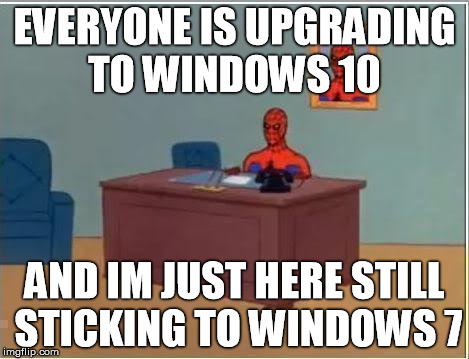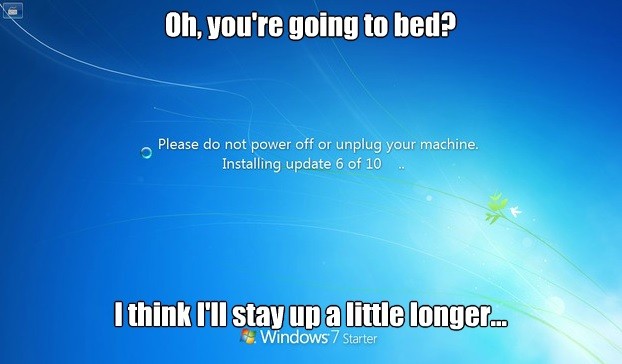Each version of Microsoft Windows has two end dates: the date when it stops providing any new features or enhancements (“mainstream support”) and the date when it stops providing any bug or security fixes (“extended support”).
Historically, the support lifecycle of each Windows operating system is about 10 years, with mainstream support ending 5 years after its release and extended support ending another 5 years after. Mainstream support for Windows 7 already ended on January 13, 2015. It has continued to receive bug/security fixes since then; however, that too will end on January 14, 2020.
What will happen to my Windows 7 PC after January 2020?

So, what will happen when you wake up January 15, 2020 and power on your Windows 7 PC? It will still run as it always did and life will carry on. However, you need to be aware of two things…
Firstly, with Microsoft no longer supporting Windows 7 the rest of the computer industry will start to follow suit. They aren’t about to support making their new software or hardware work for an operating system that Microsoft is no longer supporting. Eventually, you’ll buy a new printer, but it won’t come with Windows 7 drivers. You’ll buy a new digital camera, but the software won’t be compatible or installable on Windows 7.
Secondly, since there will be no more updates to Windows 7 it will over time become a greater and greater security risk and liability. If any new bugs or security exploits are discovered for the operating system, Microsoft will not be providing patches/updates for them. Your Windows 7 PC will be completely exposed and unable to protect itself from any potential new threats discovered after the extended support date.
Can I upgrade to Windows 10? Should I?

When Windows 10 first came out in July 2015, Microsoft offered existing Windows 7 and 8 users a free upgrade to it; however, that offer lasted for 1 year and ended July 2016. Today, upgrading to Windows 10 will cost you, but you’ll want to consider whether you want to purchase an upgrade or just get a new PC.
Windows 7 was made to work on hardware of its day (nearly ten years ago), and Windows 10 is made for hardware of today. There have been cases where certain computers will upgrade from Windows 7 to 10, but later experience problems trying to install an update. Because Windows 10 does NOT let you stop updating, you end up stuck in a loop of automatically downloading an update, attempting to install it, failing, reverting to the previous Windows 10 build, and then rinse-repeat as it discovers there’s that same update to be downloaded again!
I’ve witnessed this in a handful of computers. The client often experiences excessive Internet bandwidth usage with the gigabytes of repeated downloading, and it has caused some to go over their monthly allotment with their Internet provider resulting in charges. Additionally, waiting on Windows’ compulsory updates to fail and revert to a workable Windows environment over and over results in significant downtime that brings home and office work to a grinding halt.
My recommendation

As of this article’s date, you still have just over a year before Windows 7 becomes completely unsupported by Microsoft. You always need to balance how much more you want to invest into your existing PC as opposed to spending a bit more and getting something all new that’s made for Windows 10 (and has a warranty).
I would not recommend spending money on upgrading an existing Windows 7 PC. If it’s still around after ten years it doesn’t owe you anything; you can safely say you got your money’s worth out of it. What I do recommend is planning to replace your PC with a new one sometime in 2019. There’s still time, but the end for Windows 7 is nearing and you don’t want to put it off to the last moment.
BRETT-TEK can still help service your PC even after Microsoft’s extended support dates. If you need help with your older PC, or would like a quote on a new one, contact BRETT-TEK today!
